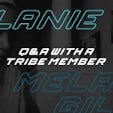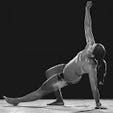Be nice. Reach out. Give more. Because you never know whom among those you help today might return the favor tomorrow. Fitness is much less about muscles and performance than it is about community and friendship, and we’ll point to the relationship between Onnit Chief Fitness Officer John Wolf and coach Jolie Kobrinsky, of Seaside, California, as proof.
The pair met more than a decade ago when Kobrinsky was an up and coming trainer and wanted to learn kettlebell training from the best. Today, her studio, Elektren, is spreading the Onnit gospel on the west coast. As part of our ongoing Onnit Stories series, in which we interview someone who’s made an inspiring life change through an association with Onnit, Wolf sat down with Kobrinsky to track how their friendship has developed and improved both their lives and careers.
See below for the full video interview. We’ve also included an edited transcript of some of the highlights. You can stay up to date with Onnit Stories by following Onnit’s Instagram TV (IGTV), where a new one appears every Wednesday.
John Wolf: It’s my pleasure to introduce to you a friend of mine who was a part of my journey before I came to Onnit, and has continued to be during my time with Onnit. She’s an awesome trainer that I’ve learned a lot from—and she’s been an anchor in my life for many years. Her name is Mrs. Jolie Kobrinsky, and she has an amazing fitness studio in California, which is where I’m originally from.
Let’s start with your early experiences with Onnit. What brought you to Onnit, and what was your first impression?
Jolie Kobrinsky: I would say it started when you were hired at Onnit in 2014. I was at your studio in Salinas, California, near where I live, learning my skills as a trainer and a coach, when all of a sudden I heard that there was this melting pot of different types of training I loved at this company called Onnit. It was based in Austin, Texas. You moved out there and I came to one of the first Onnit certifications, Foundations.
What I felt about Onnit then, and I still feel now, is that it’s a solid, easy to access, well-supported, beautifully laid out university that teaches all the things that I love to do with my clients here. While I may have branched off to do my own Jolie style on certain things, I always look at Onnit, and what I learned at the Foundations certification, as a guide. It provided me with, as the name suggests, the foundation from which all this growth has come.
We had a conversation with your husband, Michael, once, talking about the idea that, if we were to start a fitness movement from scratch, how would we want it to be? And I said, “Well, I’d really want it to be a lot more like going to the lake during summer,” where everybody comes from different places and they tie their boats together. It doesn’t matter if you don’t have beer or food on your boat, because somebody on the other boat will give you some. And if you have food, you’re going to offer it to the next person. At Onnit, I like to think we’ve fulfilled that vision to some degree.
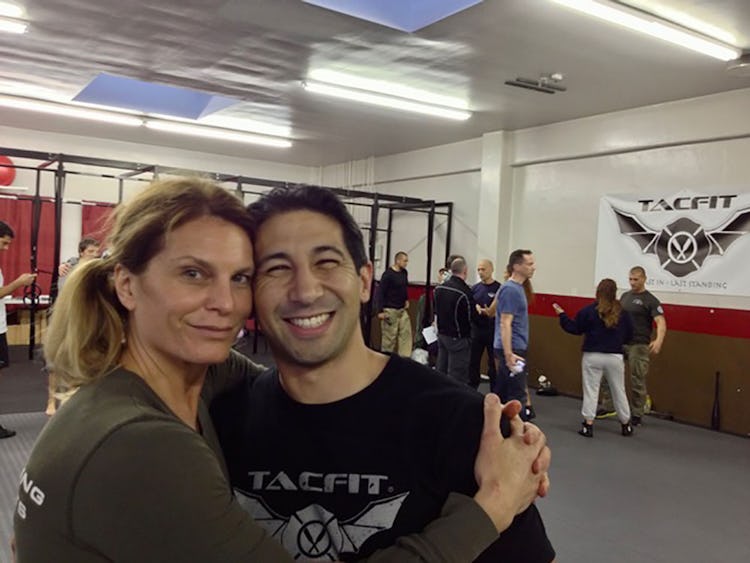
I love that image, and I think it’s gone from boats on the lake to ships in the ocean. You, Onnit, my studio of trainers, and myself are all moving together toward human optimization. That original image has always been part of my vision of how I like to conduct myself in business and in building my own brand.
I’m a woman in my 50s, and sometimes the communities of trainers I’m in look very different from me. So I want to make sure that I’m showing up authentically for myself, and for the clients that are drawn to me. So I’m going to find that little Jolie sprinkle I can layer onto everything. But you better believe I’m also a seeker of deep, valuable, applicable coaching and knowledge, and that’s where Onnit has come in for me, and continues to. I feel like Onnit is my home, and it’s my springboard or my base.
Whatever I do in training, I make sure it follows the basics Onnit taught me. The movement patterns: squat, hinge, push, pull, rotate, and control rotation. When I’m training clients, I ask myself the important questions: What is the purpose of the exercise you’re doing? Why have you chosen the tool that’s in your hand for this exercise? Why are you choosing this exercise and tool for this particular person in this particular time in their life? If you can answer those questions, you’ll be successful. For all you coaches and trainers listening to this, that’s the juice right there. That’s how you grow.
I’ve been to certifications where you’re in the room and you’re looking around and you see Adonis, Thor, or Wonder Woman. And then maybe there are a couple of normal people like you and I, and you wonder, “How do I fit in here? What can I offer to the group?” But never forget that there’s nobody just like you. I’ve had to work on that level of confidence in terms of how and what I offer, but I can really stand by what I do because I deeply value education, I commit to it, and I go back over, and over, and over again to keep my skills and my knowledge fresh.
Many of the people who are willing to invest in Onnit’s education system aren’t trainers by trade. They might want to coach people, or they coach people on the side, or they might be there for personal improvement. I started purely as a consumer of fitness who needed some tools and education to better understand how to get out of my own way—to give myself a ladder to progress in my own training. That was in 2001, and I didn’t start accepting money for services for five years or more after that.
So, those people who come into Onnit’s certs with fresh eyes, their perspective is just as valid—if not more valid—than that of the seasoned coach, because the seasoned coach is usually entrenched in the way that he/she does things. The newcomer is going to ask the questions that people that you’re training will ask.
Can you take us through the evolution of your brand and what it is today?
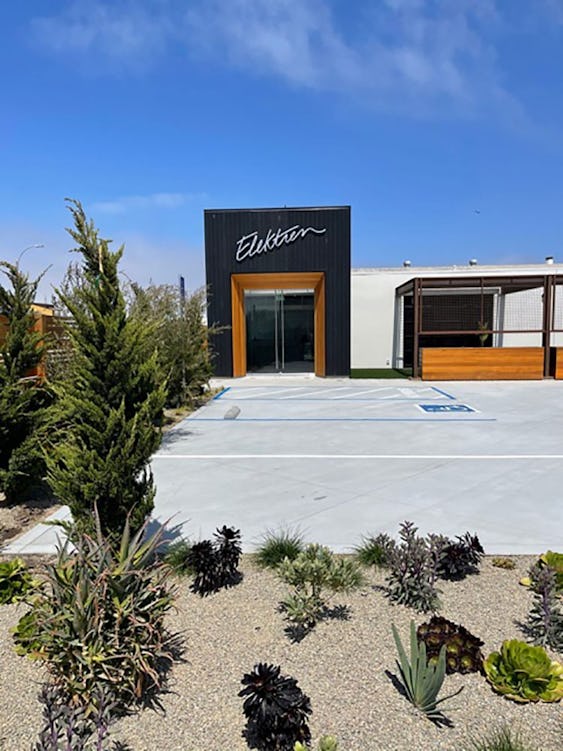
Today it’s a training studio, not a membership-based gym. I like a lot of space because I do what Onnit Gym does—a lot of ground-based movement. We’re rolling on the ground nonstop. We also play with toys like the kettlebell, steel club, and suspension trainer. You won’t see anything in my studio that you plug in.
I met you, John, in 2009. My partners and I had opened a training space in Monterey. At the time it was called Prime Personal Training. I asked John to come down and teach my trainers about kettlebells, and he did. Later, we were able to buy a building in Seaside, and I changed the business to be called Elektren, which means power plant in Lithuanian. I’m of Lithuanian descent, and I liked the idea of the studio being a community-energy driven space. It’s my way of saying I’m powered by you, and you are powered through the collective energy of the group.
I think this highlights how, when you have a tribe of people that you work with to realize your potential, and that you feel genuinely aligned with, you create friendships and bonds that transcend that original container.
Jolie may have reached out to ask if I could come and teach a kettlebell workshop, but that’s evolved into me being able to support her brand, because she and her friends and family have supported my business ventures, and my personal life. So it’s important for everyone to find your tribe, whether it’s here in Onnit, or wherever there are people you really connect with. These friendships that we speak about in these Onnit Stories aren’t just about a connection to Onnit, but very important interpersonal relationships too.
OK, it’s time to take some questions from our viewers. What are your recommendations to new trainers, or someone that may be interested in training later in life?
Begin by educating yourself, and by making connections. It doesn’t take connecting to 20 people to make something happen. You can start by having a really strong connection with one person. I’m also a big fan of having a mentor.
I really am not big on worrying about whether your age is appropriate. I’m 56. I train clients ages 13 to 93. I have beautiful connections and relationships with different genders and ages, and I feel like you never know how and who you can help. Being a trainer is a great calling. It’s so satisfying. It’s so instantly gratifying to watch a person do something spectacular in their body. I’m a big believer in starting in the body to change the landscape of many things.
Another viewer asks, “Would a primarily kettlebell-oriented daily routine be efficient for general health and muscle building? I’m extremely excited for my one pood [16 kg] chimp kettlebells arriving tomorrow.”
I’m going to give you a solid yes on that, because I’m a huge fan. When the world changed a year ago, I started teaching every day for 30 minutes live online, for a lot of people who had no equipment or just one kettlebell at home. That one tool can do so many things for you. Having just one piece of equipment is actually a great way to deep dive on all the different things that one piece can do. I think it would be very beneficial.
Yeah, the reality is that constraints create an environment where creativity is almost necessary to continue optimizing the outcomes. I think if you have a pair of 16 kilo kettlebells—two of the Onnit Primal chimps, or a single chimp—you can make fun, effective workouts.
What’s your advice for taking a garage personal training business to a commercial spot?

It’s expensive to own a business. So if you’re blessed and you can get yourself in a situation where you have the resources to buy a space, just be aware that you may not get to do all the juicy training stuff that you love to do—at least not for a while. You will have a lot of other priorities. If you’re an entrepreneur and you own a building or you’re running a building, you could be the janitor, the launderer, the marketer, and the floor sweeper as well. Managing a space is full-time.
I would say that the best first step is to find someone like me. And if you’re in Seaside, you could just walk in my studio and I’d start you as a trainer right now, because I need trainers. But I would say that you should collaborate with a like-minded gym and say, “Hey, I’m a trainer, and I’ve got three or four steady clients. Is there a time at the gym where I could train my clients and pay you rent?” That will keep your overhead low, your education high, and your quality service to your clients a very, very high priority.
As we were saying before about finding your tribe, it’s important to not be on an island. The fitness industry can be very ego-driven, very competitive, and it might be up to you to break down those barriers. You can celebrate other people’s contributions to the community without making it a direct competition. All trainers serve a purpose to make the standard of health and wellness better in their community. So keep the door open to as many creative solutions as you can that will bring the service you have to offer to the world forward.
Jolie, anything else you want to share?
I just want to circle back to the image of the boats on the ocean—the armada. When I went to Onnit in 2016 and brought two of my team members, I was so excited because now I was showing up not just solo, but as a part of a team. It was a reflection of how my business had grown. Shane Heins [Onnit’s Director of Fitness Education] was leading this particular course, and he told the story of the lunch that you and he had with my husband, Michael, when the idea of the fitness movement being like boats at the lake first came up. And I think I burst into tears. It was this full circle moment where here I was, with my coaches and the mentors who helped me build my business—people I love more than anything.
All of you who are a part of Onnit, you’re so fortunate. Take advantage of it. The education is without compare. I just really think it’ll take you a long, long way.
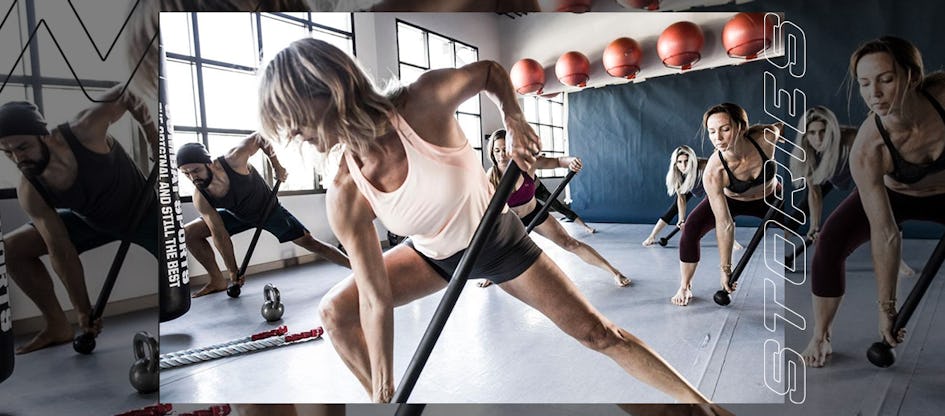
)
